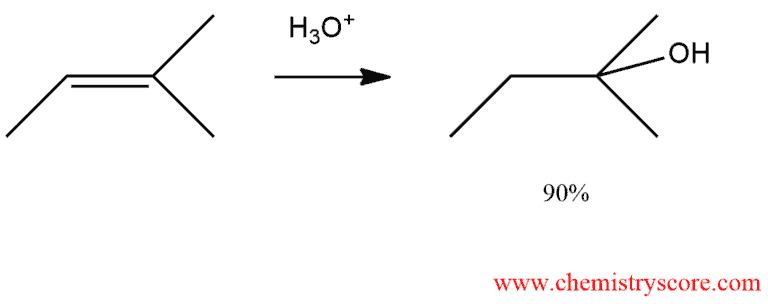Addition of H3O(+)
Addition of H3O+ Definition:
Addition H3O+ is a method for adding water (H and OH) across a double bond. This process called hydration.

Addition of H3O+ Explained:
Alkanes are stable in neutral water so hydration would not occur. But the presence of acid, however, leads to water addition to alkene and alcohol is formed. As an acid, we use sulfuric acid which has a poorly nucleophilic counterion. Water acts as the nucleophile and reacts the carbocation formed by initial protonation.

The addition follows the Markovnikov rule in that H+ added to the less substituted carbon and the OH group ends up at the substituted one.

In the mechanism of alkene hydration, all steps are reversible. The proton acts only as a catalyst and is not consumed in the overall reaction. The presence of acid establishes an equilibrium between alkene and alcohol. This equilibrium can be driven toward the alcohol by using low reaction temperatures and a large excess of water. Conversely, treating the alcohol with concentrated acid favors dehydration, especially at elevated temperatures.